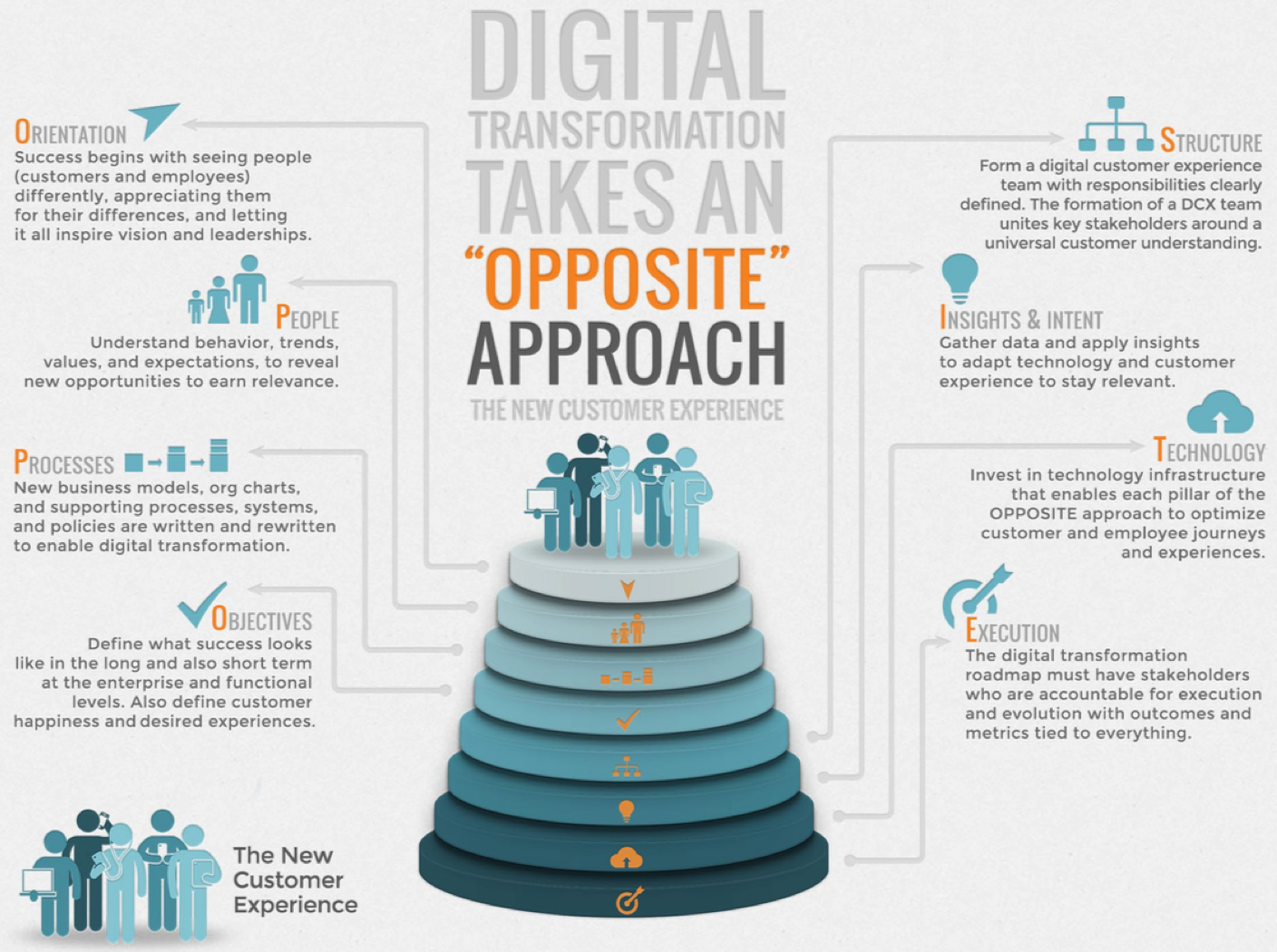Digital transformation is a buzzword. On top of that, the term digital transformation causes debate amongst those working in or studying the field and confusion among everyone else. But at the same time, digital transformation is also one of the most promising and impactful trends in business (r)evolution today. Why? It carries with it the ability to modernize how businesses work, market and serve. And more so, digital transformation offers a unique glimpse into how disruptive technologies are affecting human behavior, expectations and values. It has and will continue to guide more empathetic and people-centric strategies and investments in and around new technology and supporting infrastructures. More importantly, digital transformation carries many benefits and outcomes that…
– humanize businesses;
– make work more relevant and satisfying to employees;
– empower employees to take risks and be rewarded for doing so;
– deliver more meaningful and value-added products and services to customers;
– and, produce more productive partnerships across the board.
At least that’s the way I see it.
Defining Digital Transformation
Digital transformation is a term that means different things to different people. What started as enterprise initiatives led by progressive CIOs and IT organizations has spread throughout every facet of business. Now, executives in other critical functions are also leading investments to bring their own technology roadmaps to life. In fact, CMOs are often cited as the rival to CIOs in spending when it comes to new technologies and resources. It is this lens, more specifically that of CX and connected customers and employees, through which I’ve studied digital transformation over the last several years.
In my work at Altimeter Group (a Prophet company), I research how evolving customer experience in a digital world serves as one of the primary and most efficient catalysts for change. I define digital transformation related to my studies this way…
Digital transformation as the realignment of, or new investment in technology, business models, and processes to create new value for customers and employees and more effectively compete in an ever- changing digital economy. And, a solid place to start change begins with what I call the “new P’s” of business, People, Purpose, Promise, Personalization and Partnerships.
Why CX and not IT? It’s about time we looked at people. Contrary to other approaches in digital transformation, technology isn’t the answer…it’s an attempt. But, an attempt at what? In past reports, I found that 88% of companies where undergoing digital transformation, yet only 25% had studied digital and overall customer experiences to give technology a purpose. Said another way, most companies were investing in technology to drive digital transformation, but only 25% had an idea as to why.
That’s unacceptable. In fact, we need just the opposite.
Digital Transformation Takes an OPPOSITE Approach
As part my ongoing research in digital transformation, I’ve assembled a series of best practices as informed by those leading transformation in companies such as Discover, GM, Harvard, Metropolitan Museum of Art, Nestlé, Sephora, Starbucks, among many others. The result is a new framework and report, “Eight Success Factors of Digital Transformation: How businesses are taking an O.P.P.O.S.I.T.E. approach to business as usual.”
The framework offers insights and new understanding of technology, data and the digital customer. By learning from these companies and following the OPPOSITE approach, digital transformation becomes identifiable, approachable and attainable for organizations.
OPPOSITE is an acronym that offers companies a step-by-step approach to digital transformation. It stands for: Orientation, People, Processes, Objectives, Structure, Insights & Intent, Technology, Execution. Here’s an overview of the 8 best practices of emergent leaders and the work they’re doing to evolve businesses in a digital economy:
1. Orientation: Establish a new perspective to drive meaningful change.
2. People: Understand customer values, expectations and behaviors.
3. Processes: Assess operational infrastructure and update (or revamp) technologies, processes and policies to support change.
4. Objectives: Define the purpose of digital transformation, aligning stakeholders (and shareholders) around the new vision and roadmap.
5. Structure: Form a dedicated digital experience team with roles/responsibilities/objectives/accountability clearly defined.
6. Insights & Intent: Gather data and apply insights toward strategy to guide digital evolution.
7. Technology: Re-evaluate front and back-end systems for a seamless, integrated and native customer (and ultimately employee) experience.
8. Execution: Implement, learn and adapt to steer ongoing digital transformation and customer experience work.
The OPPOSITE framework visualizes your work building toward digital transformation and shaping the customer experience. It’s also part of a larger movement in the modernization and, in some cases complete innovation in business dynamics and models.How you manage these dynamics during the next few years will define the future of your business and also the arc of your career. Think a decade ahead, to when people will ask two questions: Did you see this technology-based sea change coming? Were you able to capture the commercial opportunity?
Consider how you’ll answer.
A human-centered approach informs your digital transformation strategy in ways not otherwise possible. And, it is this digital transformation that will carry profound implications for your market, your employees, your customer relationships, and your partners. Basically, everything and everyone relatedto your business.
Download the report here.
Connect with Brian on Social Media
Twitter: @briansolis
Facebook: TheBrianSolis
LinkedIn: BrianSolis
Youtube: BrianSolisTV
Experience is everything…read my new book, X!








8 COMMENTS ON THIS POST To “The Opposite of Change is Conformity: A framework for driving meaningful digital transformation”